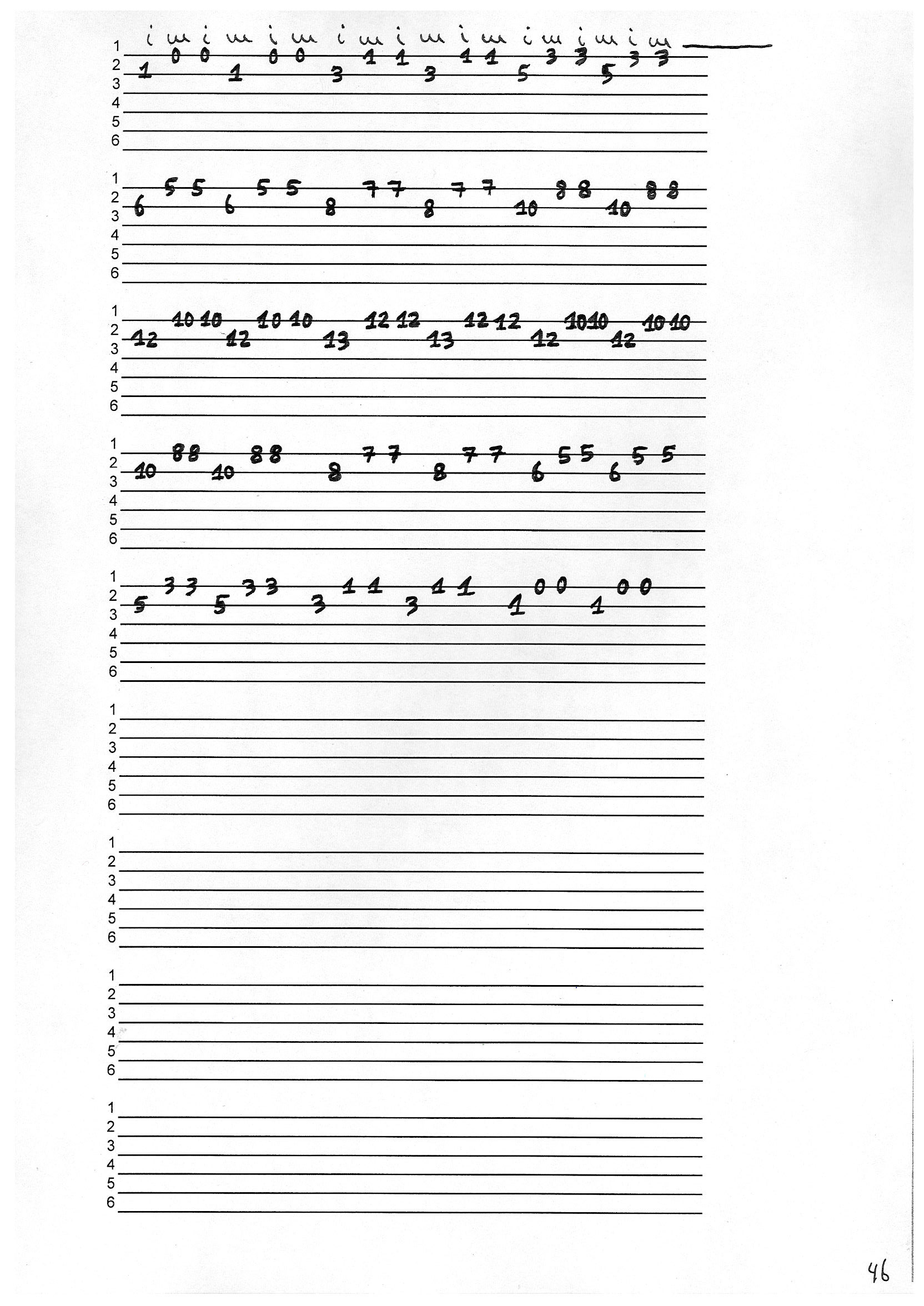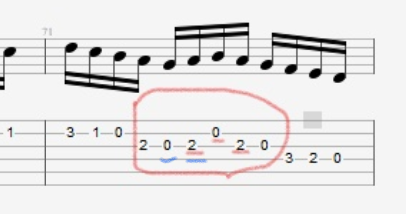|
mark indigo -> RE: Specific Picado run question - Chicuelo (Apr. 17 2020 16:13:16)
|
quote:
I basically just need to get better at descending with both fingers right?
I was shown a string crossing exercise by Jingle that he said came from Paco. I think Pimientito posted it on the foro somewhere too. I noticed the same idea (string crossing between two strings) was used in an exercise by Pedro Sierra based on scale in 3rds instead of cromatic notes on one string and the other string open.
thread is here, scroll down to Pimientito's post:
http://www.foroflamenco.com/tm.asp?m=177326&appid=&p=&mpage=1&key=warm%2Dup%2Croutine&tmode=&smode=&s=#177448
I copied the exercise/s here:
"...actually from PDLs warm up routine and he identified this problem from early playing days and came up with some mind bending exercises to train the fingers.
Firstly, lets look at playing two open strings simultaneously with i on the second string and m on the first
--0---0---0---0--
--0---0---0---0--
-------------------
-------------------
-------------------
-------------------
Easy right! Now do it again with the fingers swapped around so m is playing second string and i playing first.......much harder to do. This is not a natural way to play the strings but its exactly the position required in string changing during picado.
If we keep open strings and play in triplets (1,2,3/1,2,3 etc.)
--0-----0----0-----0----0-----0-----0-----0----0-----0-----0-----0--
-----0-----------0----------0------------0-----------0-----------0-----
----------------------------------------------------------------------------
----------------------------------------------------------------------------
----------------------------------------------------------------------------
----------------------------------------------------------------------------
m i m, i m i, m i m, i m i, etc.
The first triplet is m,i,m which is easy on the first and second strings. The next triplet is i,m,i which is our harder combination. Repeat the pattern until its effortless.
In some ways its one of the most simple and yet most difficult exercises to get right. It helps to think m...i....m....i at the begining of each triplet.
Next variation is some left hand fingering
--1-----1----2-----2----3-----3-----4-----4----3-----3-----2-----2--
-----0-----------0----------0------------0-----------0-----------0-----
----------------------------------------------------------------------------
----------------------------------------------------------------------------
----------------------------------------------------------------------------
---------------------------------------------------------------------------- REPEAT
m i m, i m i, m i m, i m i, etc.
So when that seems to be easier the next step is more chromatic fingering.
The left hand fingering is the same as the fret number so always uses finger 3 for 3rd fret, finger 4 for 4th fret etc.
--1-----1----2-----2----3-----3-----4-----4----3-----3-----2-----2----1-----1--
-----2-----------3----------4------------3-----------2-----------1-----------2-----
---------------------------------------------------------------------------------------
--------------------------------------------------------------------------------------
--------------------------------------------------------------------------------------
---------------------------------------------------------------------------- ----------
m i m, i m i, m i m, i m i, etc.
-----2-------------3------------4-------------3------------2-----------1---
-1------1------2-----2------3-----3------4-----4-----3-----3-----2-----2
------------------------------------------------------------------------------
------------------------------------------------------------------------------
------------------------------------------------------------------------------
------------------------------------------------------------------------------
repeat this pattern again on 2cd and 3rd strings then 3rd and 4th, then 4th and 5th etc.
Finally (in case this is all too easy) repeat again using m,a fingers and then i,a fingers"
Same idea in this exercise from Pedro Sierra. Triplets on two strings, so the fingers are constantly crossing back and forth between the two strings. Instead of cromatic you have C major scale in 3rds. You can take this down across strings in first position too, and you can transpose to any other scale, major, minor, phrygian, whatever:

Images are resized automatically to a maximum width of 800px
|
|
|
|



